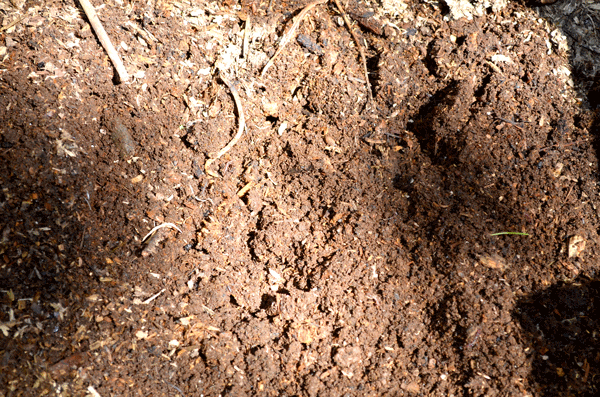That brown stuff my veggies are planted in isn’t “dirt” – it’s “soil”, a substance teeming with life from the millions of microorganisms at work. They give my plants the nutrients they need to thrive. But those veggies are greedy with how many nutrients they need, which means I need to provide them steady supplies of homegrown compost to keep them all happy.
That’s not a difficult task for our household. We compost our food scraps, which provides the nitrogen-rich “greens” our compost needs – pretty much all scraps except meat, dairy and oil. The carbon-rich “browns” come from our used chicken bedding, which gets changed out once a week.
It was many years ago that I learned we can generate a ton of organic waste that can become great compost. We just need the capacity to handle it all. By far, my favorite composting method is the three bin system. It’s super easy to setup, using mostly free materials, and it’s easy to “work” your pile (turning it from time to time and watering it in long dry spells).
The basic concept is that you fill one bin first, layering your greens and browns. Once that bin is full, start filling the next bin over. When that’s full, start filling the final bin. When that’s full, enough time has passed that your first bin should now have finished compost in it, ready for the garden. Harvest that compost and start filling it again. As you go along, you will always have one bin of finished compost, one partly decomposed and one you are filling with fresh materials.

Three bin compost system – setup side by side with a nice wide path in front for easy access to the piles
My favorite way of building a three bin system uses wood pallets, a great option for several reasons. The large gaps between the boards allows air to easily circulation around the pile. All that oxygen keeps the microorganisms in the soil happily working away at decomposing the pile. Pallets are also free and easy to find -can’t beat that price! And finally, they make a great size for your piles. Compost piles around 3′ wide work best – these are just a bit bigger.
I used ten pallets total for this three bin system: three for the back, three for the front, one on each end and two dividers in the middle. Each end is held in place with a simple length of rebar staked into the ground. The exception is on the front pallets, where only one end is staked in place. That way they can swing out like a door when I need to get in to harvest compost or turn the pile.
Jay was making fun of me for being so excited about how nice the compost area now looks. I can’t help it. I love my garden so much that I photograph compost… But hey, it saves me a ton of cash by not having to buy new soil each season and my vegetable garden loves it. Not to mention the landfills are a bit smaller without my garbage.










I also compost and I use my chicken bedding! I just ordered your book today and I can’t wait to get it!
Kindred spirit! Hope you love the book 🙂